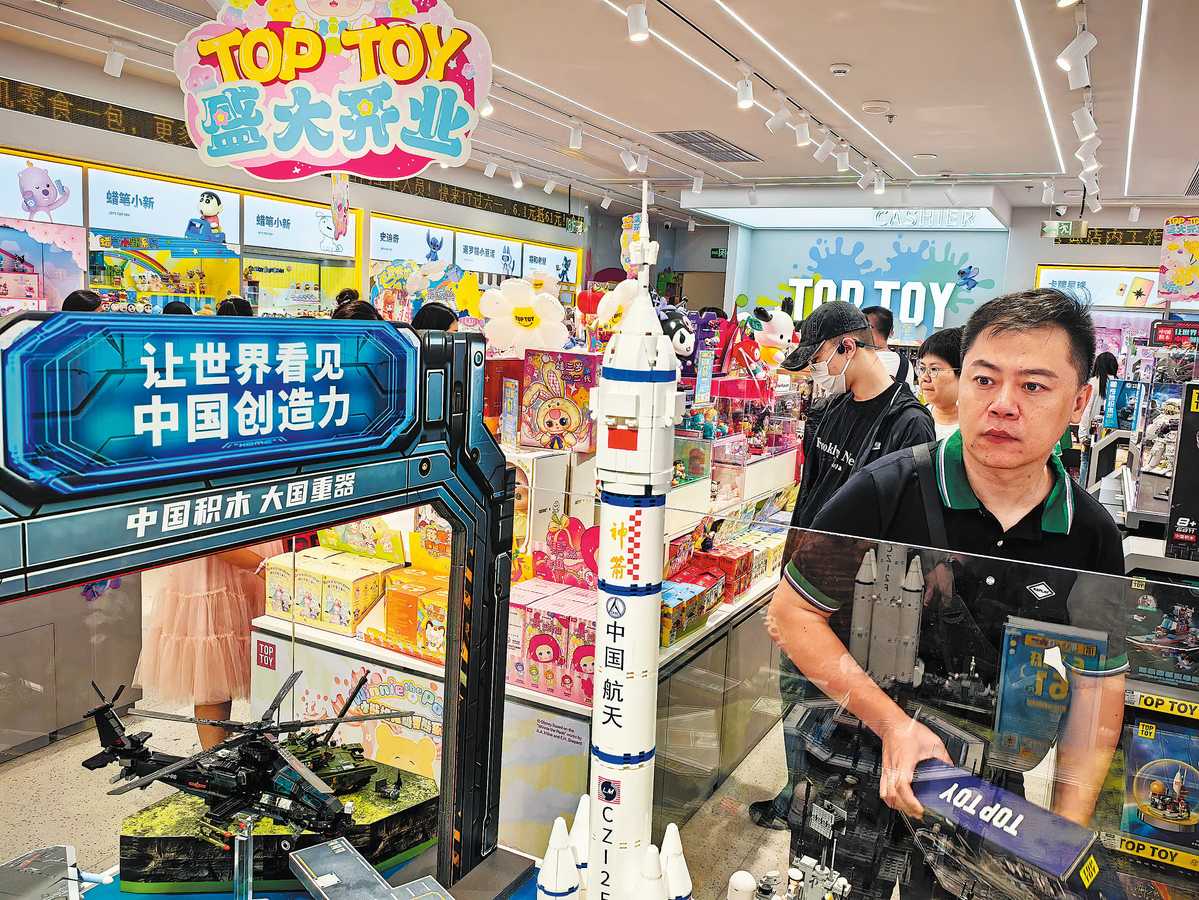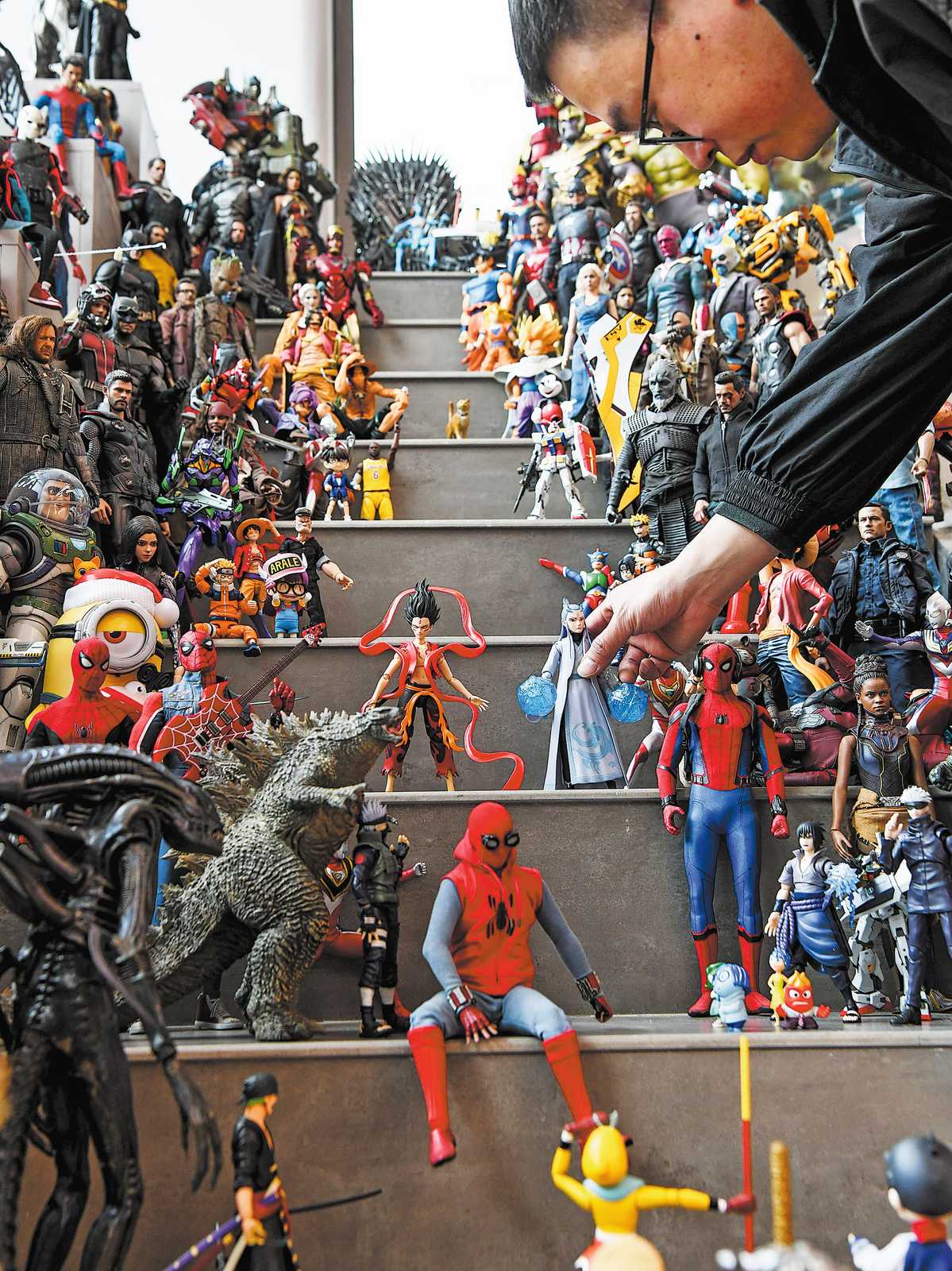
From TikTok dance trends to flying taxis and myth-based blockbuster video games, China is no longer just manufacturing the future, it's influencing global imagination.
A decade ago, the country's profile was tightly linked to economic growth and exports. Now, its global image is increasingly defined by innovation, creativity and cultural relevance, particularly among Gen Z worldwide.
"There is staying power in the Chinese cool factor; it's not a flash in the pan, it's not a passing fad," said Professor Lawrence Loh, a strategy and policy expert at the National University of Singapore.
"We are seeing an evolution from J-pop to K-drama to now a more holistic 'C-cool' trend."
The fusion of technology and storytelling has elevated Chinese pop culture to new heights. Video games such as Black Myth: Wukong, based on the classic novel Journey to the West, are drawing global praise for both their cinematic visuals and mythological depth. "It's a holistic shift, where tech meets culture, design, and daily life, and this wave is just starting", according to Ashley Dudarenok, founder of China-focused digital marketing company Alarice.
Platforms like TikTok and Xiaohongshu (RedNote) are at the center of this movement. TikTok, developed by ByteDance, is not only a global leader in short-form video but also ranked by Brand Finance as the world's seventh most valuable brand, ahead of Instagram and Facebook.
"Chinese tech brands like Huawei, BYD, Xiaomi, and TikTok are redefining global consumer expectations," said David Haigh, chairman and CEO of Brand Finance, a London-based brand valuation consultancy. "China is no longer just the 'factory of the world', it is transforming into a global innovation leader."

Labubu, viral success
China's creative industries are no longer just reacting to Western trends; they are generating them. The viral success of the character Labubu, a quirky forest elf popularized through social media and collaborations with the Louvre and Uniqlo, is one telling example.
"The most notable example recently was the popularity of Labubu, with shoppers fighting each other to get one," said Tom Harper, a China expert at the University of East London.
Meanwhile, bite-sized Chinese micro-dramas on platforms like ReelShort and FlexTV are captivating millions of international viewers with high-drama narratives tailored for short attention spans.
Dudarenok attributes this rise to China's multi-pronged strategy: massive R&D investment, tax incentives for global co-productions, and a creative wave led by Gen Z content makers. In 2024 alone, China invested 3.6 trillion yuan ($502 billion) in research and development, according to the National Bureau of Statistics.
Amrita Banta, managing director of Agility Research & Strategy, highlighted another reason for this appeal: "Chinese pop culture is gaining traction among younger audiences because of its ability to blend traditional narratives with the latest trends and unique storytelling techniques."
She added that these innovations, combined with Gen Z's appetite for authenticity and global perspectives, position Chinese pop culture as both distinctive and accessible to international youth.
"The appeal of Chinese popular culture is largely due to how it offers something different to mainstream popular culture," Harper explained. "In some ways, that makes it similar to Hallyu, also known as the Korean Wave, and the popularity of Japanese popular culture in the 1990s and early 2000s.
Advancements in artificial intelligence, robotics, and smart mobility are reshaping perceptions of China's role in global innovation. In cities like Guangdong province's Guangzhou and Shenzhen, flying taxis have become a reality, while AI companies such as DeepSeek are emerging as serious competitors to ChatGPT based in the United States.
"The tech prowess of Chinese companies is across a broad spectrum, from the internet and social media to autonomous tech and AI," Loh said. "The emergence of agentic AI may spawn even greater 'coolness' products."
Banta said: "The launch of flying taxis in Guangzhou and Shenzhen demonstrates China's leadership in urban innovation and mobility infrastructure. These cities are becoming living laboratories for future-forward technologies."
Harper added in the case of Deep-Seek, this is due to how it appears less controlled by Western companies than OpenAI is. "It gives China an edge in perception, an independent tech path," he said.

Youth-driven perception
Younger generations, particularly Gen Z and Millennials, are engaging with China in more nuanced ways. According to Brand Finance's 2025 Soft Power Index, perceptions of China among digitally connected young people have improved significantly since 2020.
"Gen Z appreciates the blend of heritage and hyper-modernity," said Dudarenok. "Black Myth: Wukong isn't just a game, it's a cultural ambassador that shifts how people view Chinese creativity."
Haigh added: "Since 2020, Gen Z and Millennials perceive China more positively than older generations. The biggest gains come from areas like international relations, economic strength, and cultural heritage."
This narrative transformation reflects a structural shift. "China becoming cool can be seen as a result of long-term development," said Harper. "As China becomes more developed economically, its soft power naturally strengthens."
In recent months, China's soft power strategy has gained momentum through policy as well. Visa-free entry for citizens from 75 countries and the participation of global media, such as the BBC's Race Across the World filming across China, are helping open new windows into Chinese life and culture.
"The visa-free entry and exposure through global media will definitely generate more interest in China from people overseas," Loh said. "China's cool factor will contribute immensely to its soft power internationally."
Challenges, next steps
Despite the momentum, challenges remain. Some cultural exports still face difficulty resonating abroad due to localized storytelling or dense cultural references.
"Many Chinese pop culture exports focus on fusing ancient stories with modern values, which can sometimes limit global reach," said Dudarenok. She pointed to Ne Zha 2, which became the highest-grossing animated film of all time, yet earned 99 percent of its revenue on the Chinese mainland.
"While the world is fascinated by companies like DeepSeek and Unitree, it will take time for people to fully embrace these innovations," she said. "As interactions with China increase, initial apprehension will give way to excitement and appreciation."
Harper observed that global perceptions may also shift as political dynamics evolve. "The credibility, and hence influence, of the US has taken a hit lately. This will inevitably lead to a shift from US to Chinese products, or even more broadly, to Chinese culture," he said.
He pointed to the automotive sector as an example, highlighting how BYD had surpassed Tesla in electric vehicle sales across Europe. "This mirrors how consumers see the US and China, most notably in how (Tesla CEO Elon) Musk's antics are a factor in why people are opting for BYD," Harper said. "Equally, this is due to how 'made in China' is associated with quality as opposed to its previous image of cheap poor quality goods, which echoes Japan's rise. In this sense, China has a better image now than it did before."
What's clear is that China's new image has not been built overnight. It's the product of years of effort across tech, culture, and policy. "This is a self-sustaining cultural flywheel, tech enables storytelling, stories drive exports, exports fund R&D," said Dudarenok.
As China continues to integrate innovation with cultural expression, it is not only reshaping global perceptions, but also becoming a trendsetter in the process.
Contact the writer at: wangmingjie@mail.chinadailyuk.com


